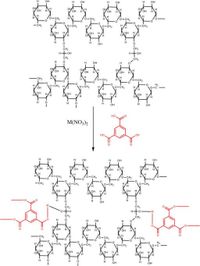In a groundbreaking study published on March 20, 2025, researchers have unveiled new granules composed of metal-organic frameworks (MOFs) that demonstrate significant efficacy in removing harmful uremic toxins from simulated blood. The investigation holds promising implications for the development of portable artificial kidneys that could benefit patients suffering from chronic kidney disease (CKD).
The study highlights how the modified Sephadex granules, specifically the Fe-BTC@Sephadex, Cu-BTC@Sephadex, and Co-BTC@Sephadex, adsorb toxic chemicals like creatinine, p-Cresol sulfate, and hippuric acid. These molecules typically accumulate in the bloodstream due to a decline in kidney function, culminating in detrimental health effects. The researchers, led by Abdelhameed, R.M., El-Shahat, M., Hegazi, B., and their colleagues, utilized advanced adsorption optimization techniques to demonstrate the granules' capabilities.
Chronic kidney disease is characterized by a gradual degradation of glomerular filtration, which can allow uremic poisons to build up in the blood. As these toxins accumulate, patients are faced with increasing health risks. A notable toxin, creatinine, is particularly harmful when present in high levels but is not effectively removed by conventional dialysis. In response, the researchers explored MOF technologies—a novel approach to enhancing toxin removal from blood.
The granules were synthesized using a solvothermal method and were rigorously tested for their adsorption capacities. Results showed that the Fe-BTC@Sephadex granules exhibited remarkable adsorption capabilities, showing a maximum capacity of 545.69 mg/g for creatinine. The results for other toxins were also striking, with adsorption capacities of 323.78 mg/g for hippuric acid and 122.65 mg/g for p-Cresol sulfate.
The synthesis process incorporated materials such as iron (III) nitrate, copper (II) nitrate, and cobalt (II) nitrate while utilizing Sephadex G-100 as a foundational component. Post-synthesis, the granules underwent thorough assessments, including Fourier transform infrared spectroscopy (FT-IR) and scanning electron microscopy (SEM), to characterize their morphology and functionality.
According to the researchers, "These were, in fact, promising findings that have implications for an industrial-scale transportable artificial kidney." This represents a key advancement in the quest to enhance dialysis effectiveness. The Fe-BTC@Sephadex granules not only demonstrated higher adsorption capacities but also indicated the potential for easy regeneration and reuse, which is critical for long-term applications.
The inquiry into these granules comes at a crucial time when innovative medical solutions are desperately needed for CKD patients. Current treatments often fail to fully remove uremic toxins, leading to a host of associated complications. The application of such MOF-enhanced materials could pave the way for more effective detoxification methods.
The study posits an alignment with the Langmuir isotherm model, indicating that the adsorption process is primarily chemical rather than purely physical, which is vital for understanding how these materials interact with toxins at a molecular level. By leveraging this fundamental insight, further research can be guided to enhance the effectiveness of current dialysis technologies.
As the authors summarize, "The developed compound’s remarkable elimination efficiency points to its possible application as a dialysis therapy agent." This statement underscores not only the immediate implications of the findings but also invites questions about the future of kidney health management as innovations like these granules move closer to clinical application.
In conclusion, the study reinforces the need for ongoing exploration into advanced sorbent materials that can make a tangible difference in patient outcomes. Opportunities abound for enhancing the quality of life through the integration of such technologies into future medical treatments, a definitive step towards overcoming the limitations of current dialysis methods.

